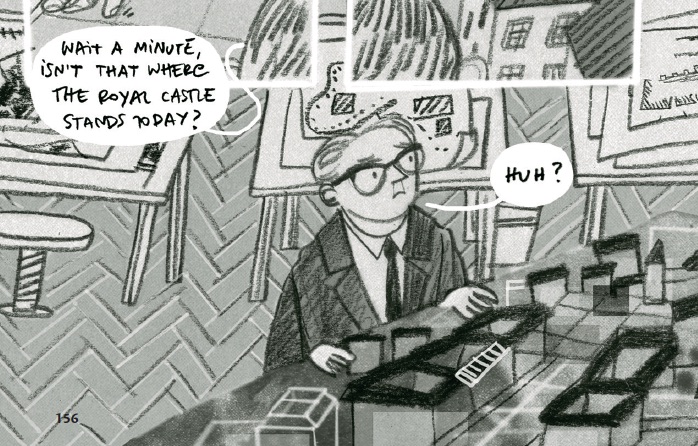After several months of preparation, we were finally able to start our project “Redrawing Stories from the Past” in early April. The first workshop took place in Pančevo, 30 km away from Belgrade. With the help of our local project partner, Elektrika, we met for five days at the cultural centre of the municipality of Pančevo, a meeting point of the local culture scene and a place for theatre, dance and art performances.

Our workshop started with the presentation of the five artists involved. Ole Frahm, a historian, artist and comic theorist, prepared a lecture about Art Spiegelman’s Comic “Maus” and the representation of the Holocaust in comics since 1945. Afterwards, comic artist Sascha Hommer introduced the contemporary European comic scene and focused on comics about National Socialism and WW II. Based on these inputs intensive discussions took place during the next days between the artists and the workshop leaders.
The topic centred around the questions, of how do deal with historical material in the artistic work. How to find artistic strategies to tell a story, when the source material is restricted and gaps are evident. So the possibilities, impossibilities and insecurities how to draw forgotten stories of the victims of National Socialism were discussed. We also talked about the different narratives of National Socialism in different European countries and, more abstractly, about the definition of victim and perpetrator. The artists presented their first ideas and showed first drawings.

Beside the intensive working phases in the group, we had the chance to see the city of Pancevo and the opening of the international comic exhibition comiXconnection. As part of the workshop and in cooperation with comiXconnection, we organized a public discussion with the well-known Serbian comic artist Alexandar Zograf. He presented his recent comic about Hilda Dajč, a Serbian Jew, who wrote letters out of the concentration camp Sajmište in Belgrade, bevor she was killed in a gas wagon. Zograf used these letters as a basis to create a documentary comic.
On our last day, we took the minibus to Belgrade and visited the KZ Sajmište, a former fair exhibition ground, which was used as a concentration camp between 1941 and 1945. After WW II the area fell into oblivion and is today a run-down district with housing, bars, sport clubs and illegal brothels, right in the center of Belgrade. There is only a small group of activists who is fighting for the area to become a place of commemoration of the Holocaust.

The first workshop was intensive, interesting, answered a lot of question, but raised even more. Now we are looking forward to the next steps of the project: the storyboards of the artists in early summer, the second workshop in Chemnitz at the AJZ Chemnitz in July and then, later on in this year to the exhibitions in the Galerie im Saalbau in Berlin (November) and the exhibition in the AJZ Chemnitz.













